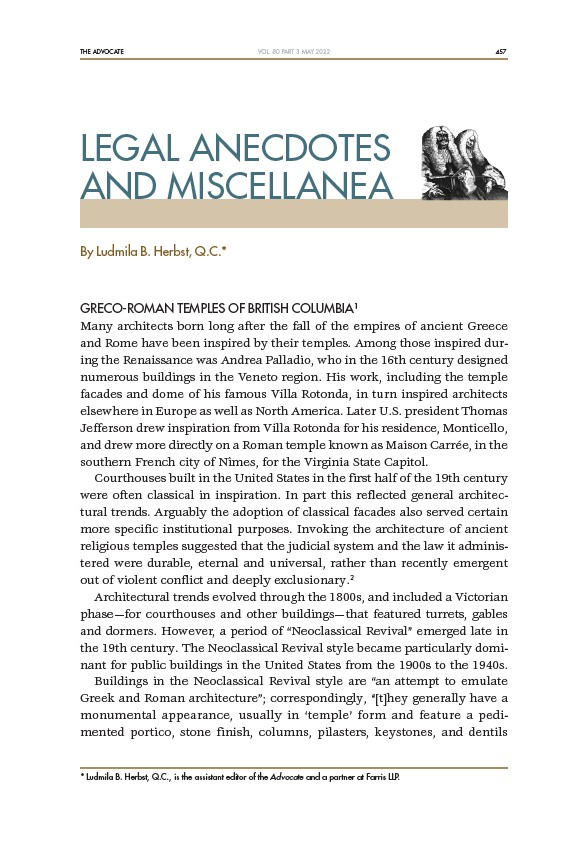
THE ADVOCATE 457
VOL. 80 PART 3 MAY 2022
LEGAL ANECDOTES
AND MISCELLANEA
By Ludmila B. Herbst, Q.C.*
GRECO-ROMAN TEMPLES OF BRITISH COLUMBIA1
Many architects born long after the fall of the empires of ancient Greece
and Rome have been inspired by their temples. Among those inspired during
the Renaissance was Andrea Palladio, who in the 16th century designed
numerous buildings in the Veneto region. His work, including the temple
facades and dome of his famous Villa Rotonda, in turn inspired architects
elsewhere in Europe as well as North America. Later U.S. president Thomas
Jefferson drew inspiration from Villa Rotonda for his residence, Monticello,
and drew more directly on a Roman temple known as Maison Carrée, in the
southern French city of Nîmes, for the Virginia State Capitol.
Courthouses built in the United States in the first half of the 19th century
were often classical in inspiration. In part this reflected general architectural
trends. Arguably the adoption of classical facades also served certain
more specific institutional purposes. Invoking the architecture of ancient
religious temples suggested that the judicial system and the law it administered
were durable, eternal and universal, rather than recently emergent
out of violent conflict and deeply exclusionary.2
Architectural trends evolved through the 1800s, and included a Victorian
phase—for courthouses and other buildings—that featured turrets, gables
and dormers. However, a period of “Neoclassical Revival” emerged late in
the 19th century. The Neoclassical Revival style became particularly dominant
for public buildings in the United States from the 1900s to the 1940s.
Buildings in the Neoclassical Revival style are “an attempt to emulate
Greek and Roman architecture”; correspondingly, “they generally have a
monumental appearance, usually in ‘temple’ form and feature a pedimented
portico, stone finish, columns, pilasters, keystones, and dentils
* Ludmila B. Herbst, Q.C., is the assistant editor of the Advocate and a partner at Farris LLP.